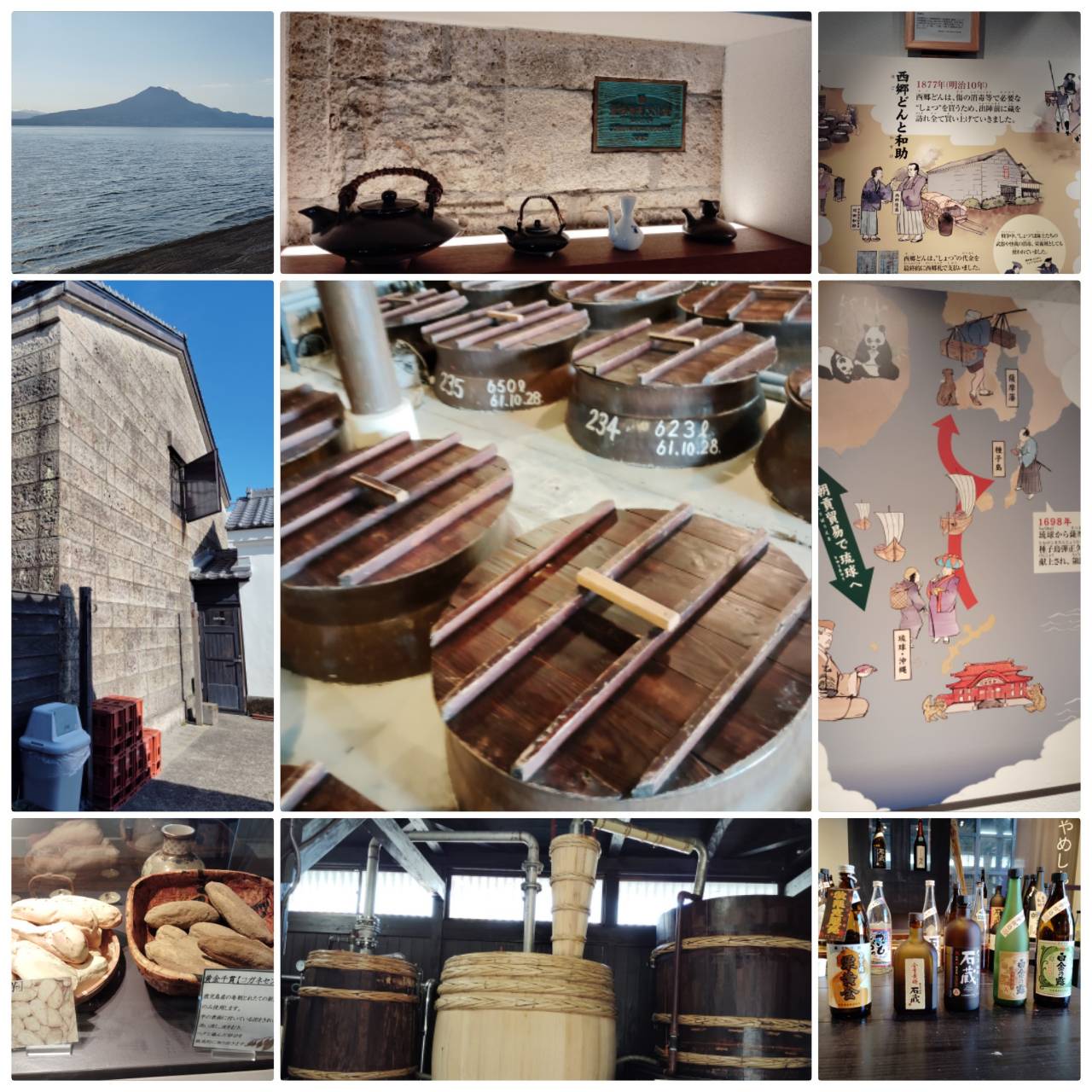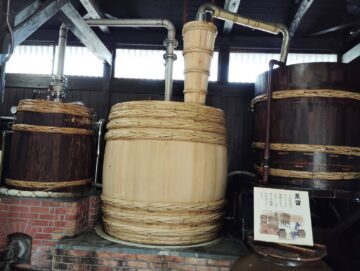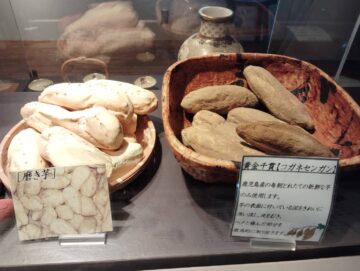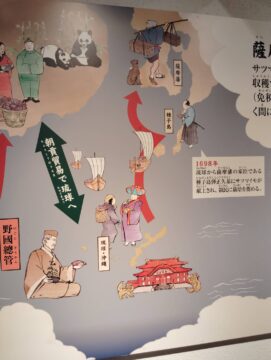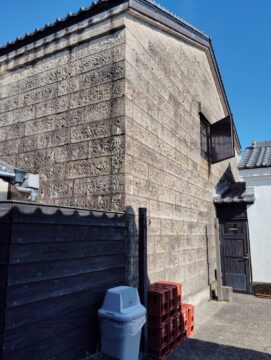【発酵ソムリエ】石蔵ミュージアムで焼酎について考えるひとときを!
【発酵ソムリエ】琉球や中国からの影響。芋焼酎の発展の仕方が興味深いこれだけの理由!
先日、鹿児島で歴史と伝統を感じる旅をしてきました。訪れたのは、明治2年創業の川田醸造店(現在の白金酒造)。
明治10年の西南戦争の際には、西郷隆盛率いる薩摩軍が陣を張り、戦場での「栄養ドリンク剤」や「消毒液」として、蔵にあった焼酎がすべて買い占められたと伝えられています。
その時、お金として西郷さん発行のお金の代わりになる書面を残したそうです。今でいうビットコインならぬ西郷コインのようなものでしょうか?
しかし、明治政府に反抗したわけですから正規のお金とは交換なりませんでした。
このような物語を聞くと、少年時代の豊臣秀吉が樽の中で遊んでいたという岡崎の味噌蔵での逸話も思い出され、歴史の中でお酒が人々の生活と共にあったことが伝わってきます。
白金酒造の焼酎造りは、鹿児島ならではの風土を生かしたもの。桜島の火山活動がもたらすシラス台地は火山灰が豊富で、サツマイモの栽培に適しています。
また、黒麴は泡盛とともに琉球からきたものです。サツマイモもやはり中国や南アジアをへてきています。
こうした地の利が芋焼酎文化を支え、鹿児島を代表するお酒へと発展させたのです。
ここでの焼酎は、三種類の黒麹を使って仕込まれます。麹室(こうじむろ)で茶色の黒麹の粉を一直線にまき、
蒸した米と豪快に混ぜ合わせる様子が、他の地域で見られるさらさらとした深緑色の麹とは異なり、非常に迫力がありました。
また、蒸留器も見事で、地元の杉材と鹿児島で初めて植えられた孟宗竹で作られたタガが使われているのが特徴です。ここにも鹿児島らしい工夫が凝らされています。
焼酎の製造過程も興味深く、もろみにして6日間の第一次発酵を行った後、
芽と皮を取り除き蒸したサツマイモを加えて8日間の第二次発酵に進みます。
https://www.shirakane.jp/ishigura-m/
こうして丁寧に発酵されたもろみは、その後3年から6年の間タンクで貯蔵され、熟成を重ねていきます。
残念ながらタンクの見学はできませんでしたが、
桜島を借景にした立地は雄大で、海水浴場でもできます。開放感あふれる場所でした。
歴史と自然が融合した鹿児島の焼酎文化。皆さんも訪れる機会があれば、ぜひその味わいと共に感じてみてください。
#発酵ソムリエ #鹿児島の焼酎 #黒麹の室 #西郷隆盛コイン #石蔵ミュージアム
I recently took a trip to Kagoshima to experience history and tradition. I visited the Kawada Brewery (now Shirogane Brewery), which was founded in 1869. It is said that during the Seinan War of 1877, the Satsuma Army led by Takamori Saigo set up camp and all the shochu in the brewery was bought up as a ‘nutritional drink’ and ‘disinfectant’ on the battlefield. These stories also remind us of an anecdote from a miso warehouse in Okazaki, where Hideyoshi Toyotomi played in the barrels as a boy, showing that sake has been with people’s lives throughout history.
Shirogane Shuzo’s shochu production makes the most of Kagoshima’s unique climate. The Shirasu Plateau, which is caused by the volcanic activity of Sakurajima, is rich in volcanic ash and is suitable for growing sweet potatoes. These geographical advantages have supported the Sweet potato shochu culture and developed it into Kagoshima’s representative liquor. Shochu here is brewed using three types of black malted rice. In the koji chamber, brown black koji powder is spread in a straight line and mixed vigorously with steamed rice, which is different from the plain dark green koji seen in other regions.
The distillation vessel is also magnificent, and features a tag made from local cedar wood and moso bamboo, which was planted for the first time in Kagoshima. This is another example of Kagoshima’s unique ingenuity.
The process of making shochu is also interesting: after six days of primary fermentation, sweet potatoes are added and the shochu goes through a second fermentation process that takes eight days. The carefully fermented mash is then stored in tanks for three to six years for further maturation. Unfortunately, we were not able to visit the tanks, but the location, with Sakurajima in the background, was magnificent, with a sense of openness that could have been used as a swimming beach.
Kagoshima’s shochu culture is a fusion of history and nature. If you have the opportunity to visit, please try to feel it with its flavour.
https://www.shirakane.jp/ishigura-m/
#Fermentationsommelier #Ishigura #sweetpotate #Shochu #SaigoTakamori


